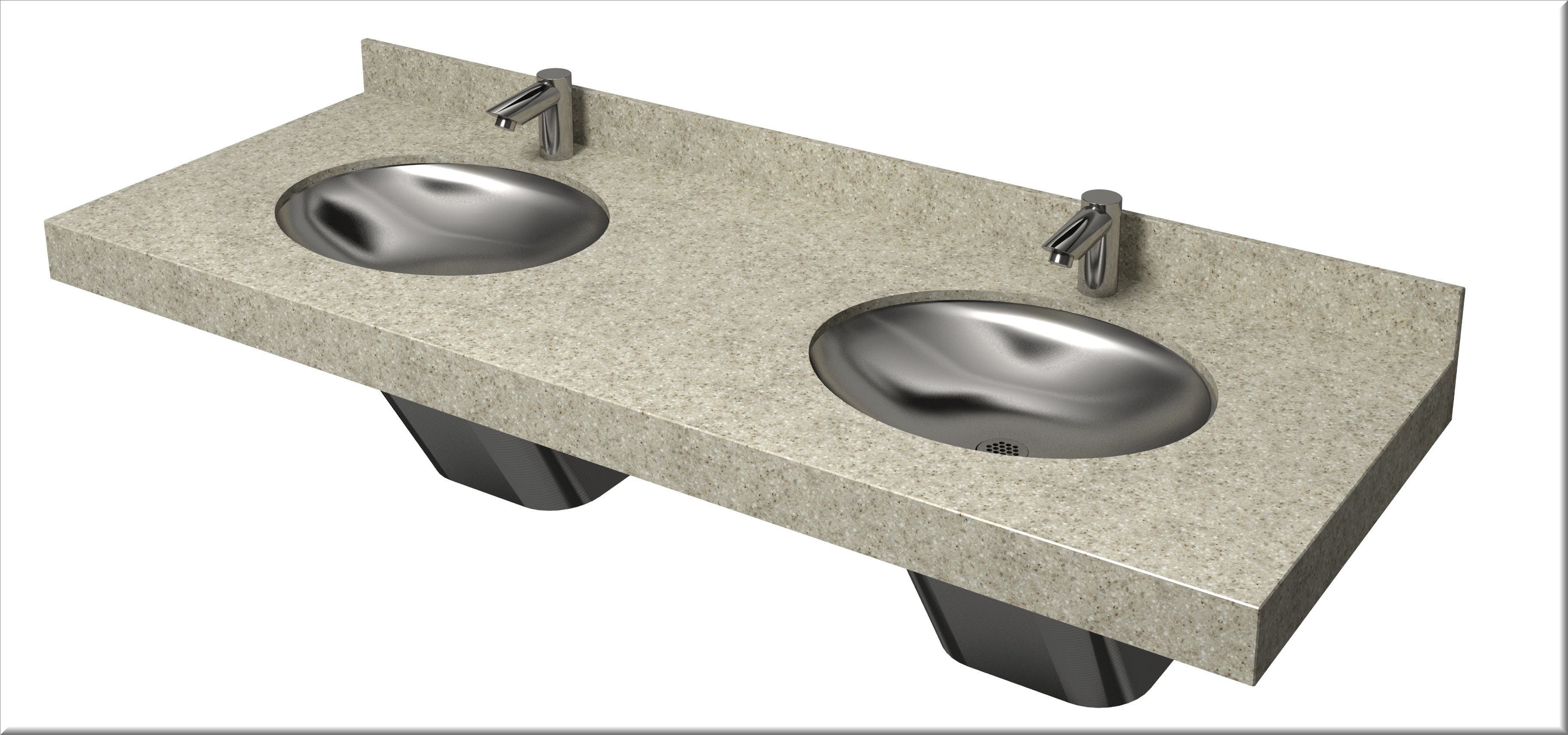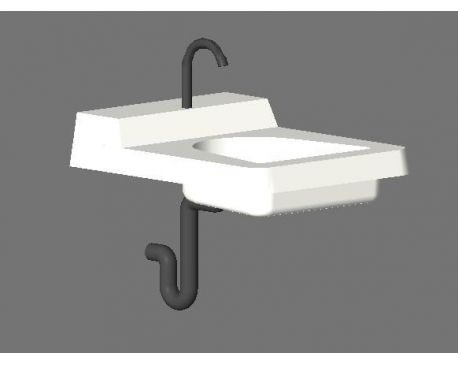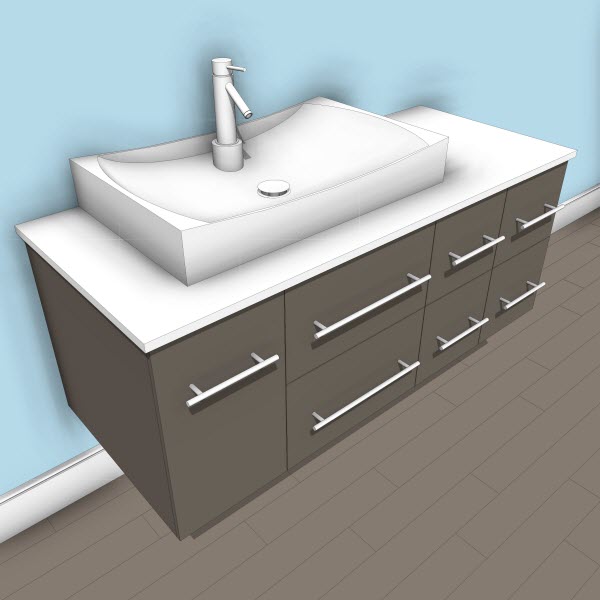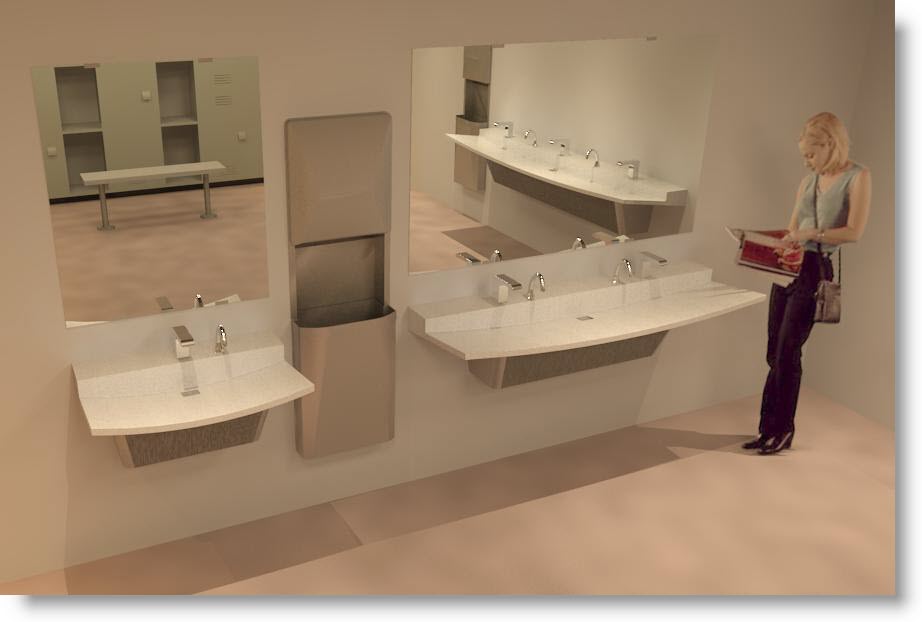Exploring the Benefits and Functionality
Bathroom sink Revit families have revolutionized the way architects and designers plan and visualize their projects. These digital representations of bathroom sinks offer numerous benefits and enhance the functionality of any design. Below are the advantages of using bathroom sink Revit families and how they can elevate your design process.
- Accurate Visualization: One of the primary benefits of utilizing bathroom sink Revit families is the ability to accurately visualize the final product. These families provide a realistic representation of the sink, allowing designers to understand how it will look in the space. This level of accuracy helps in making informed decisions and ensures that the end result matches the initial vision.
- Time and Cost Efficiency: By using bathroom sink Revit families, designers can save valuable time and reduce costs throughout the project. These families come pre-modeled with accurate dimensions and specifications, eliminating the need for manual measurements and calculations. This streamlined process allows designers to focus on other aspects of the project, ultimately increasing productivity and efficiency.
- Collaboration and Communication: Bathroom sink Revit families facilitate better collaboration and communication among the design team. With these families, designers can easily share their ideas and concepts with clients, contractors, and other stakeholders. The visual representation helps in conveying the design intent effectively, reducing misunderstandings and ensuring everyone is on the same page.
- Flexibility and Adaptability: Bathroom sink Revit families offer a high level of flexibility and adaptability. They can be easily modified and customized to suit specific design requirements. Whether it’s changing the material, shape, or size of the sink, these families allow designers to experiment and explore different options without starting from scratch. This flexibility enhances creativity and allows for unique design solutions.
- Increased Accuracy in Documentation: Another advantage of using bathroom sink Revit families is the increased accuracy in documentation. As these families are integrated into the Revit software, all the necessary information, such as dimensions, material specifications, and manufacturer details, can be easily extracted and included in the project documentation. This ensures that the construction process is carried out smoothly, minimizing errors and discrepancies.

Choosing the Right Bathroom Sink Revit Family
Choosing the right bathroom sink Revit family is crucial for a successful design. It is essential to consider various factors that will impact both the aesthetics and functionality of the sink. Let’s discuss the key factors to consider when selecting a bathroom sink Revit family and how they can contribute to the overall design and function of the space.
Size and Configuration: The size and configuration of the bathroom sink are important considerations. It is essential to choose a sink that fits well within the available space and complements the overall design. Consider factors such as the number of users, the intended use of the sink, and any specific requirements, such as ADA compliance. This will ensure that the sink not only looks aesthetically pleasing but also functions efficiently.
Material and Finish: The material and finish of the sink play a significant role in both the durability and visual appeal of the design. Consider factors such as the desired aesthetic, maintenance requirements, and compatibility with the overall design concept. Popular materials include porcelain, stainless steel, and solid surface, each offering unique advantages in terms of durability, hygiene, and aesthetics.
Faucet Compatibility: When choosing a bathroom sink Revit family, it is important to consider the compatibility with faucets. Different sink designs may require specific faucet types or configurations. Consider factors such as the number of faucet holes required and the desired faucet style. Ensuring compatibility between the sink and faucet will result in a cohesive and functional design.
Plumbing Considerations: Plumbing considerations are essential when selecting a bathroom sink Revit family. It is important to ensure that the sink’s plumbing connections align with the existing plumbing infrastructure. Consider factors such as the location of water supply and drain lines, as well as any specific requirements for trap heights or venting. This will help avoid costly and time-consuming modifications during the installation process.
Maintenance and Cleaning: Lastly, it is important to consider the ease of maintenance and cleaning when choosing a bathroom sink Revit family. Look for sink designs that are easy to clean, with smooth surfaces and minimal crevices where dirt and grime can accumulate. Consider factors such as stain resistance, anti-microbial properties, and ease of access for cleaning purposes. This will ensure that the sink remains hygienic and visually appealing over time.
Installing and Configuring Bathroom Sink Revit Families
Installing and configuring bathroom sink Revit families is a crucial step in integrating them into your design project. Follow this step-by-step guide on how to install and configure these families in your Revit software, ensuring a seamless integration into your design workflow.
Step 1: Downloading the Bathroom Sink Revit Family The first step is to download the desired bathroom sink Revit family from a reputable source. There are numerous websites and online libraries that offer a wide range of Revit families, including bathroom sinks. Make sure to choose a family that meets your design requirements and is compatible with your Revit version.
Step 2: Importing the Revit Family into Your Project Once you have downloaded the bathroom sink Revit family, open your Revit project and navigate to the “Insert” tab. Click on the “Load Family” button and browse for the downloaded Revit family file. Select the file and click “Open” to import the family into your project.
Step 3: Placing the Bathroom Sink in Your Design After importing the Revit family, it will be available in the project browser under the “Families” category. Locate the bathroom sink family and drag it into your design view. Place it in the desired location within your bathroom layout.
Step 4: Configuring the Bathroom Sink Parameters To configure the bathroom sink parameters, select the placed sink in your design view. In the properties palette, you will find various parameters that can be modified, such as dimensions, materials, and other specific settings. Adjust these parameters according to your design requirements to customize the sink to your liking.
Step 5: Fine-tuning and Testing After configuring the bathroom sink parameters, it is important to fine-tune and test the sink within your design. Check for any clashes or conflicts with other elements in the project, such as plumbing fixtures or cabinetry. Make any necessary adjustments to ensure proper integration and functionality.
Enhancing Design and Aesthetics with Bathroom Sink Revit Families
Bathroom sink Revit families offer a wide range of customization and material options that can greatly enhance the design and aesthetics of your project. Here are different ways you can customize and select different materials for your bathroom sink Revit families to achieve the desired look and feel in your design.
Customization Options: Bathroom sink Revit families provide numerous customization options to suit your design requirements. You can modify parameters such as dimensions, shape, bowl configuration, and faucet hole placements. This level of customization allows you to create unique and tailored sink designs that fit seamlessly into your overall bathroom layout.
Material Options: Another way to enhance the design and aesthetics of your bathroom sink Revit families is by selecting the right materials. Revit offers a wide range of material options, including porcelain, stainless steel, quartz, and solid surface materials. Each material has its own unique characteristics, such as durability, hygiene, and visual appeal. Consider the desired aesthetic, maintenance requirements, and durability when selecting the material for your sink.
Textures and Finishes: In addition to materials, you can also apply textures and finishes to your bathroom sink Revit families. Revit provides a library of textures and finishes that can be applied to different components of the sink, such as the basin, countertop, and faucet. Experimenting with different textures and finishes can add depth, visual interest, and a touch of luxury to your sink design.
Lighting and Reflections: To further enhance the design and aesthetics of your bathroom sink Revit families, consider the lighting and reflections within your project. Revit allows you to adjust the lighting settings and apply realistic reflections to the sink surface. By fine-tuning these settings, you can achieve a more realistic and visually appealing representation of the sink within your design.
Rendering and Visualization: Take advantage of Revit’s rendering and visualization capabilities to showcase the enhanced design and aesthetics of your bathroom sink Revit families. Render the scene with high-quality materials, textures, and lighting settings to create stunning visuals that accurately represent the final design. This will help you communicate your design intent effectively to clients and stakeholders.
Troubleshooting and Common Issues
While bathroom sinks Revit families offer numerous benefits, there can be some common issues and challenges during their integration and maintenance. Let’s discuss troubleshooting tips and provide solutions for common issues that may arise when working with bathroom sink Revit families, ensuring seamless integration and smooth maintenance.
Family Compatibility Issues: One common issue is family compatibility. Revit families are created for specific Revit versions, and using an incompatible family can result in errors or missing elements. Ensure that the bathroom sink Revit family you are using is compatible with your Revit version to avoid any compatibility issues.
Placement and Clashes: Sometimes, when placing bathroom sink Revit families within your design, clashes may occur with other elements such as plumbing fixtures or cabinetry. To avoid clashes, carefully review the placement of the sink and adjust its position if conflicts arise. Use Revit’s clash detection tools to identify and resolve any clashes before finalizing the design.
Parameter Adjustments: Another common issue is adjusting parameters within the bathroom sink Revit families. Sometimes, certain parameters may not work as expected or produce unforeseen results. In such cases, verify the parameter settings and ensure they are correctly adjusted. If issues persist, consult the Revit documentation or reach out to the Revit community for assistance.
Maintenance Considerations: Maintenance is an important aspect of working with bathroom sink Revit families. Over time, project requirements or design changes may necessitate modifications to the sink. It is crucial to keep track of the sink families used in your project and update them accordingly. Regularly review and update the sink families to ensure they align with the current design and functionality requirements.
Revit Updates and Compatibility: Revit regularly releases updates and new versions, and it is essential to consider compatibility when working with bathroom sink Revit families. Before updating your Revit software, verify the compatibility of the sink families you are using. Check with the family’s manufacturer or the Revit community to ensure a smooth transition and avoid any compatibility issues.
Ada hand sink for Revit – modlar.com
BIM object – Wash Basins – Tempo Wall Hung 800mm Vanity Unit With
Sink Bathroom Modern – Corner revit family Thousands of free
Virtu Ceanna Single Vanity [10347] – $2.00 : Revit families
Bradley Molded Shapes Solid-Surface Lavatory Systems u2013 Revit
Download Bradley Verge LVL Revit Lavatory – Enhanced Reach Accessible
Related Posts:






